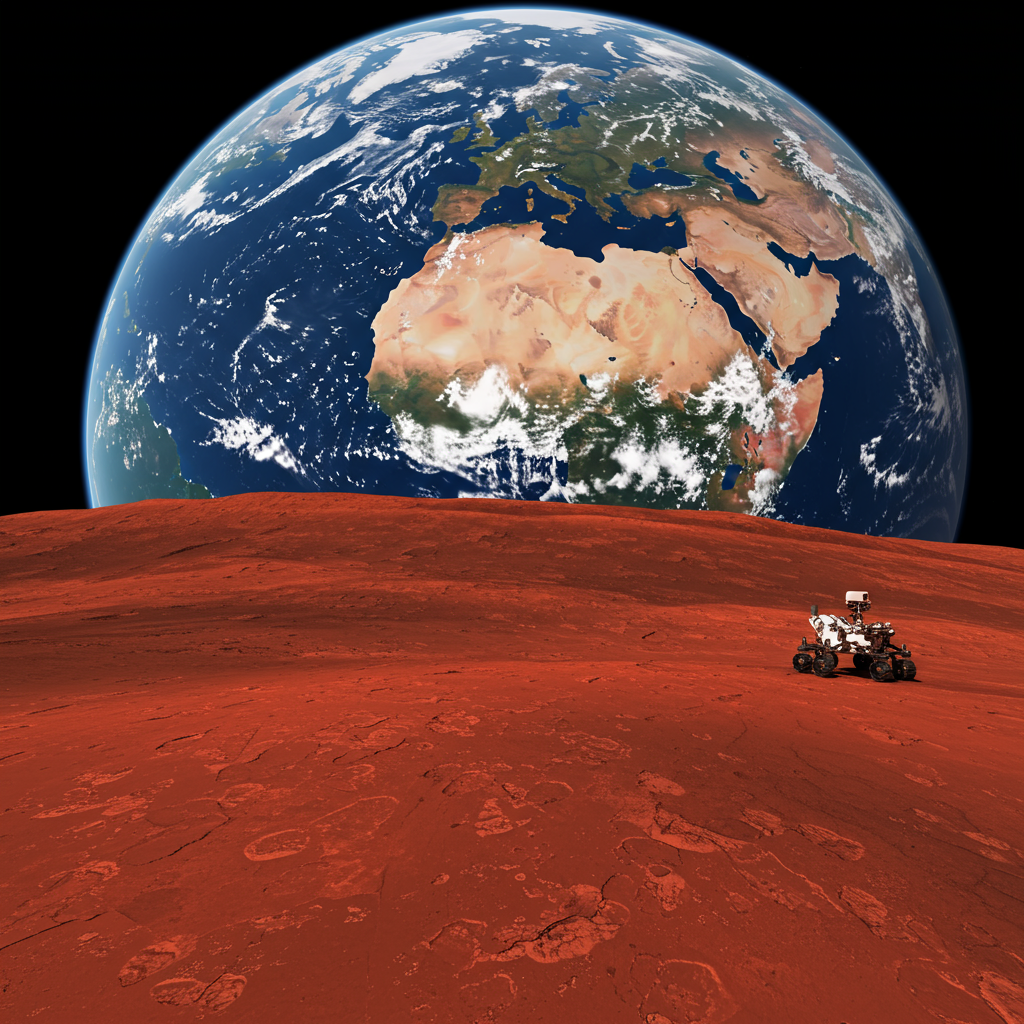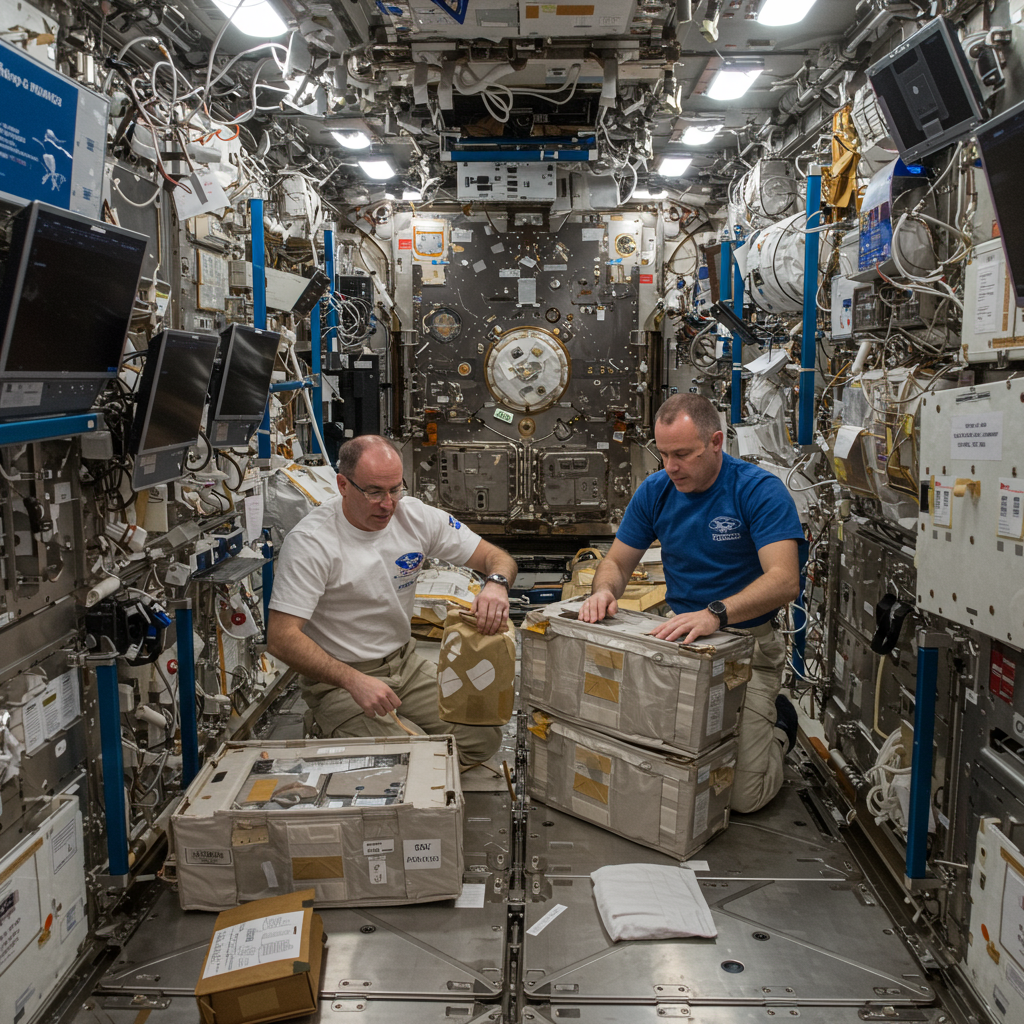For decades, humanity has gazed at Mars, pondering a profound mystery: why is our nearest planetary neighbor a desolate, seemingly lifeless desert, while Earth teems with billions of living things? Both worlds show signs of once having had liquid water, considered essential for life as we know it. What went wrong for Mars?
A recent discovery by NASA’s Curiosity rover, coupled with groundbreaking new research, offers a powerful explanation for this enduring puzzle. It suggests that while rivers and lakes may have occasionally graced the martian surface, the planet was fundamentally doomed to remain mostly barren due to a critical difference in its long-term climate regulation compared to Earth.
The Longstanding Mystery of Mars’s Barrenness
Scientists understand that for life to take hold and thrive, liquid water is crucial. Evidence of ancient riverbeds, lakebeds, and even possible ocean coastlines across the Martian surface confirms that water flowed freely in Mars’s distant past. Yet, today, the surface is frigid, dry, and exposed to harsh radiation, utterly inhospitable to complex life. Rovers like Curiosity and Perseverance continue to search for signs that life might have existed millions or billions of years ago during those potentially more habitable periods.
The central question remains: if Mars once had water, why did it lose it, and why did it fail to maintain a stable, Earth-like environment over geological timescales?
Earth’s Climate Engine vs. Mars’s Stalled Cycle
Our planet maintains its habitable climate largely thanks to a dynamic carbon cycle. Carbon dioxide (CO2) in the atmosphere acts as a greenhouse gas, trapping heat and warming the planet. This atmospheric CO2 can dissolve in water and air, eventually reacting with rocks through weathering processes. On Earth, these reactions produce carbonate minerals (like limestone), effectively pulling CO2 out of the atmosphere and locking it away in rocks over millions of years.
However, Earth’s climate system doesn’t just store CO2; it also releases it. Volcanic activity plays a vital role, spewing trapped carbon gases back into the atmosphere. This continuous process of locking away and releasing carbon creates a relatively stable, self-regulating climate over vast periods, allowing liquid water to persist on the surface and support diverse ecosystems.
Mars, the new research suggests, has a different story.
The Carbonate Clue: How Rocks Sealed Mars’s Fate
The key insight comes from NASA’s Curiosity rover, which discovered rocks rich in carbonate minerals in Mars’s Gale Crater. While carbonates on Earth are a sign of a healthy carbon cycle and past water, their presence on Mars, combined with other factors, points to a different outcome.
A new study published in the journal Nature, led by planetary scientist Edwin Kite and based on sophisticated modeling, explored the implications of these Martian carbonates. The study indicates that Mars also formed carbonate rocks, sequestering CO2 from its early atmosphere, which would have helped warm the planet.
The critical difference lies in Mars’s volcanic activity. Compared to Earth’s vigorous and consistent volcanism, Mars has a “feeble” rate of outgassing. This means that while carbonates formed and trapped atmospheric CO2, there wasn’t enough volcanic activity to regularly return that CO2 back into the atmosphere.
This disrupted carbon cycle led to a catastrophic climate shift. As CO2 was progressively locked away in rocks without being adequately replenished by volcanoes, the Martian atmosphere thinned dramatically. With less CO2 to trap heat, the planet cooled rapidly, causing any surface liquid water to freeze or evaporate.
A World of Brief ‘Oases’
The modeling suggests that any periods with significant liquid water on Mars were likely fleeting “oases” – brief interludes of warmer conditions – followed by immensely long stretches of cold, dry desert. These barren periods could last for 100 million years or more between potential watery phases.
Such sporadic habitability presents a significant challenge for life. For life to originate and evolve beyond simple microbes, it typically requires stable conditions over prolonged periods. These vast, dry gaps would make it exceedingly difficult for life to take hold, survive, or diversify on the surface, offering a compelling reason why concrete evidence of past Martian surface life remains elusive.
Perseverance, NASA’s other Mars rover exploring an ancient delta in Jezero Crater, has also found evidence of carbonates at the edges of dried-up lakebeds, further supporting the idea that these minerals played a role in Mars’s climate history.
Beyond the Surface: Where Life Might Still Linger
While the surface conditions appear devastatingly hostile for persistent life – characterized by extreme cold, intense radiation due to a lack of a protective global magnetic field, and no stable liquid water – scientists haven’t given up the search for life entirely. The focus is increasingly shifting below the punishing surface.
Hidden Habitats: Meltwater Below the Ice
One promising possibility for present-day microbial life lies beneath Mars’s extensive water ice deposits. A separate NASA study, using computer modeling, proposes that enough sunlight can penetrate Martian water ice to create shallow pools of meltwater below the surface, potentially allowing for photosynthesis.
This occurs in dusty ice deposits, particularly found in the Martian tropics (between 30 and 60 degrees latitude). Dark dust particles trapped within the ice layers absorb sunlight, warming the surrounding ice and causing it to melt a few feet down. This is similar to how ‘cryoconite’ holes form on Earth’s glaciers, which are known to harbor thriving microbial communities.
Crucially, the layers of ice above these potential meltwater pools would shield any life from the harsh surface radiation and prevent the water from sublimating (turning directly into gas) in the thin atmosphere. Scientists are now mapping potential locations where these buried, dusty ice deposits could exist, identifying prime targets for future missions.
Reinterpreting the Past: What Viking Really Found
Understanding Mars’s challenging surface chemistry also sheds new light on past missions. The NASA Viking landers in 1976 conducted biology experiments that produced puzzling results, initially interpreted by some as potential signs of life. However, later missions dramatically changed our understanding of Martian soil composition.
The Phoenix lander discovered high concentrations of perchlorate salts in the Martian soil. Recent re-examinations of the Viking data, considering this perchlorate discovery, suggest a non-biological explanation for the Viking results. When Viking heated soil samples, perchlorates could have broken down any potential organic molecules, explaining why they weren’t detected. When Viking added nutrient solutions to the soil, the perchlorates, potentially altered by cosmic rays into reactive oxidants like hypochlorite, could have reacted chemically with the nutrients, mimicking biological activity.
This modern interpretation doesn’t rule out life on Mars entirely, but it suggests that the specific results from Viking’s shallow surface experiments were likely due to the planet’s harsh, perchlorate-rich chemistry, not biology. It reinforces the idea that if life exists, it’s more likely to be found in protected subsurface environments.
New Chemical Clues: The Significance of Sulfur
Adding another layer of complexity to the picture of ancient Mars’s potential habitability is the recent discovery by Curiosity of pure, elemental yellow sulfur crystals. While sulfate minerals (sulfur combined with oxygen and other elements) have been found before, this was the first detection of sulfur in its pure form.
On Earth, sulfur compounds are vital for many life forms, serving as potential energy sources, particularly for microbes living in environments without sunlight, like deep-sea hydrothermal vents. The discovery of elemental sulfur alongside evidence of past water hints at specific, potentially energy-rich chemical environments that could have existed on ancient Mars, possibly expanding the range of locations and conditions where past microbial life could have survived.
The Ongoing Search: Rovers, Samples, and the Big Question
The insights gained from these discoveries refine the strategy for the ongoing search for Martian life. Missions are now keenly focused on areas like ancient delta deposits (Perseverance at Jezero Crater), layered sedimentary rocks potentially preserving biosignatures (Curiosity on Mount Sharp), and subsurface water ice locations.
Ultimately, the most definitive way to confirm whether life ever existed on Mars is to bring Martian rocks back to Earth for analysis in sophisticated labs. Both the United States and China are actively developing missions to achieve Mars Sample Return within the next decade.
Understanding whether Mars, a planet with some Earth-like qualities and past water, ever hosted even simple microbial life is crucial for answering one of humanity’s biggest questions: how common is life across the universe? If Mars, despite having past water, remained lifeless due to its unstable climate, it might suggest that the emergence of life is a difficult process. Conversely, if evidence of ancient Martian life is found, it would imply that life’s origin on a planetary scale might be relatively easy, given the right initial conditions.
Frequently Asked Questions
Why did Mars become a barren desert planet?
Mars became a barren desert primarily because of a difference in its carbon cycle compared to Earth. While Mars had water and formed carbonate rocks that trapped atmospheric carbon dioxide (CO2), its volcanic activity was too weak to release that CO2 back into the atmosphere at a sufficient rate. This caused the atmosphere to thin, the planet to cool dramatically, and surface liquid water to become unstable, leading to vast, dry periods lasting millions of years.
Where are scientists currently looking for life on Mars?
Scientists are increasingly focusing the search for life on Mars in subsurface environments, where potential life would be shielded from harsh surface radiation and extreme temperatures. Promising locations include areas with underground water ice deposits (particularly where sunlight might penetrate to create meltwater), deep salt deposits, and ancient subsurface features where water might have persisted. Current rovers also explore ancient lakebeds and deltas for signs of past life preserved in rocks.
What does the new understanding of Mars mean for finding life beyond Earth?
Studying Mars provides a crucial case study for astrobiology. By understanding why life (or lack thereof) on Mars unfolded differently than on Earth, despite some initial similarities, scientists gain insights into the specific conditions required for life to emerge and survive on a planetary scale. Discovering whether Mars ever hosted life helps inform estimates about the likelihood of finding life on the thousands of exoplanets being discovered around other stars, guiding the search for habitable worlds elsewhere in the universe.
Life on Mars remains one of science’s most compelling quests. While the new research paints a picture of a planet where surface life struggled against an unstable climate cycle, it also highlights promising new avenues for exploration, particularly below ground. With ongoing missions and future sample return efforts, humanity inches closer to understanding the Red Planet’s past and its place in the cosmic story of life.




